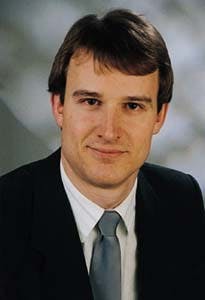How petroleum firms can win battle for growth with vision engineering
Alasdair Mackintosh, Volker SchmidtThe "vision thing" has always been difficult to master-not just for certain U.S. presidents but for corporate chieftains as well.
Gemini Consulting
London
Perhaps in no industry has formulating a vision come to pose more of a challenge than in the oil and gas business. As a top executive of a major U.S. oil company recently put it: "You tell me the price of oil, and I'll tell you my vision."
Of course, ever since the plunge in oil prices in the mid-1980s, the industry has discovered the dangers of basing future strategies on oil price predictions. Depressed oil prices and increasing competition have decimated margins in virtually all aspects of the business and have led many producers to focus on short-term measures intended to rationalize their operations.
While the intense focus on cost-cutting has helped improve operations, it has in many cases also led some companies to neglect their strategic planning capabilities. In the process, strategic planning has become little more than an extension of the budgeting process. At the same time, these companies have seen a dramatic erosion of human competencies for strategic thinking and leadership.
Now many key players in the industry are emerging from a period of restructuring only to find that by losing the focus on exploiting opportunities for growth, they actually have destroyed enormous amounts of shareholder value. In particular, many industry players are finding themselves unprepared for dramatic changes in their competitive environment, such as the retail marketing revolution that increasingly is forcing oil and gas producers to become general merchandisers.
New framework needed
In the face of such dramatic change, companies throughout the industry now find themselves in need of a new strategic architecture-an overarching framework that creates the capability for continuous strategic renewal.
Such a framework not only allows companies to pursue opportunities in the current environment but also uncover new opportunities as conditions inevitably change in the future. It endows the company with a continuous ability to focus on strategic issues and to act on them advantageously no matter what the competitive landscape.
One important function of that strategic architecture is to formulate a company's vision of the future. In the past, that has typically meant scenario planning, discontinuity theory, or some other speculative approach to vision planning. However, some companies-including one major U.S.-based global oil and gas company and two European oil producers-have adopted a far sounder methodology known as "vision engineering."
Vision planning exercises aren't new, of course. But what makes vision engineering unique-and especially appropriate for the oil and gas industry-is that the process begins by generating new business opportunities-and ultimately an overarching vision-from known trends in both industry and society. Thus, vision engineering represents a more robust alternative to such techniques as scenario planning that give much greater weight to the inherently unstable territory of market uncertainties-a fact that often makes scenario planning little more than a betting exercise. (While vision engineering takes uncertainties into account, it does so only after the known trends have been thoroughly analyzed and a vision has begun to take shape.)
What vision engineering does
Vision engineering creates a sound conceptual foundation for strategic planning and helps solve some of the traditional challenges of the planning process.
For one thing, vision engineering is an intensely interactive, process-oriented methodology that harnesses the know-how within diverse areas of a company, as well as that of outside experts. The goal is to develop a vision that is based on a multi-dimensional view of the key trends and opportunities facing a company, as well as a view of the organization's capabilities and shortcomings.
The collaborative, hands-on nature of the process helps circumvent two typical stumbling blocks of strategic planning:
- Because the process draws on ideas and expertise throughout a company, as well as those of outside experts, and is designed to foster constructive debate, it helps to create corporate alignment around whatever vision and opportunities a given team decides to pursue.
- Because vision engineering forces the company to look at outside trends before evaluating its own capabilities and shortcomings, the process helps the company go beyond conventional wisdom and embrace fresh ideas. It also helps reduce defensive discussions based on territorial interests.
Participants note that the process works precisely because it is rooted in research and intense problem-solving.
To quote the chief operating officer of a company that recently tried this approach: "It is so much more powerful for winning our people's commitment to our vision, when it is known to be based on the rigorous analysis of more than two hundred market trends."
How it works
The process, which typically takes 3-4 months, consists of at least three workshops.
The first workshop sets the tone of intense collaboration and involves an exercise known, in sociological lingo, as ocular clustering analysis. In contrast to its technical-sounding moniker, Workshop I can be as exciting as a high-stakes board game. The team, which draws its members from throughout the organization and includes experts from outside the company, meets for the first time around a table that is stacked with more than 100 cards, each bearing a different "trend statement" or fact.
The fun begins as each team member pulls together clusters of the cards that seem to be linked. Each participant then gives his or her cluster a heading that makes a statement about a key megatrend or "driver" that is having a major impact on the industry. For example: Environmental issues steer industrial development. The statements with their supporting facts and trends are taped to the wall around the room. And then the debate begins. Supporting trends might include: Taxes on oil products will continue to rise; government bodies will continue to lead environmental initiatives; use of renewable energy (excluding hydro) will increase but only incrementally; the European Union will have an increasing influence on member countries' energy policies; public relations and social responsibility will continue to be of increasing importance to companies, etc. (see table, p. 23).
The clustering process helps the team determine priorities among the myriad trends bombarding industry and society. In addition to spotlighting important industry trends, the process helps the vision engineering teams see how some phenomena that seem unrelated to the oil and gas business do, in fact, significantly affect the industry. For example, merchandising at the pump is directly related to such disparate societal phenomena as the increasing time pressures faced by working Americans, especially working women, who are seeking greater convenience.
The vision engineering process also helps the team decide which of the myriad waves of opportunity the company ultimately will ride to shore. As Bob Frisch, the Gemini vice-president who developed vision engineering, puts it: "It's one thing to see the waves that are heading toward the shore; the trick is to decide which wave to ride and which ones to leave to the other surfers."
Using what's at hand
Significantly, unlike the work of futurists who also analyze trends, vision engineering seeks to use the data and research that most major companies already collect but frequently languish inside a company's research or strategic planning departments.
These data, gathered in advance of Workshop I and used to formulate trend statements, are augmented by additional research furnished by outside specialists and consultants. For example, the vision engineering process at one oil and gas company included an expert on database marketing, as well as a consumer behavioralist.
By the end of the first workshop, the vision engineering team has agreed on six to 10 key "drivers of change" in their industry. Ideally, the process also has prepared the team for a more open discussion of the company's specific capabilities and shortcomings, as well as the key opportunities it should be considering. These capabilities and opportunities are then tested against the "drivers of change" in the subsequent workshops.
How it started
Vision engineering is a relatively new concept. It was pioneered in the early 1990s as a way to help Sears Roebuck & Co. decide whether to keep the company together or to spin off its component businesses. These included Allstate Insurance, Prodigy, and Homart, a real estate developer.
One of the most important components in the decision was the development of a long-term view of what the combined entity might evolve to look like in the future.
The vision engineering process helped illuminate the numerous synergies, especially in information technology, between Sears' core retailing business and the databases and information technologies of its subsidiaries, especially those of Allstate and Prodigy. More importantly, however, it helped resolve the seemingly irreconcilable tension between short-term and long-term benefits. When a financial analysis of Sears revealed that, for the shareholders, breaking up the company was the best solution in the near-term, the vision engineering process helped to identify the key synergies that would accrue to Sears and the spunoff companies if they continued to share their customer data bases. So, although Sears ultimately was broken up, the company went to great lengths to preserve relationships with its former affiliates that would allow the companies to, for example, "maintain an Allstate built, 70 million household database with...customer data and information from Sears and its former affiliates."
Although vision engineering originated in retailing, it was soon embraced by oil and gas companies that found themselves, time and again, reacting too slowly to sweeping changes in everything from international trade to marketing. In turn, the process has been adapted specifically to meet the needs of the oil and gas industry. For some companies the vision engineering process was precipitated by a crisis; for others, by a desire to adapt with greater agility to a quickly changing world.
Lube unit case history
The lubricants division of one global oil and gas company embraced vision engineering as a way to help build on past successes and develop a more robust strategy for the future. The division, which has long been a leader in multiple segments of the lubricants business, decided to undertake its first vision engineering project soon after management recognized that the business consisted of a multitude of different markets-and customers-with vastly different and ever-changing requirements. Equally important, the company, which was regionally organized, realized that achieving and sustaining industry leadership also would require a greater ability to exploit synergies across its businesses. In short, to remain successful, the company needed to formulate a new vision that would take into account the growing complexity of the business.
The lube division began by analyzing trends reshaping the industry, which now consists of three main market segments: The multibillion-dollar market for automotive lubricants, which are fast becoming commodity products; the middle market for commercial transportation, such as big truck fleets; and highly specialized industrial applications-a market that has the most exacting standards but also promises the highest margins.
In Workshop I, the lube division's vision engineering group wrestled with more than 170 trend hypotheses that spanned the spectrum from trends in oil and gas marketing to consumer buying patterns. These trends were clustered together to derive seven key drivers of change that are expected to transform the lube industry.
The vision engineering team then looked at each step in its value chain-from R&D and refining to sales and marketing-as well as its key product lines and analyzed how each "driver of change" would affect those areas. Separately, the vision engineering team also compiled a list of uncertainties and company capabilities that would influence the new business opportunities it might pursue.
Throughout the process, each member of the team would rate the level of effects that each trend, driver, and uncertainty would likely have on the lube business. This rating scheme helps work through the inevitable disagreements that are exposed during the vision engineering process and often reveal the unique perspectives of each team member.
By the end of the process, the lube division had crystallized its vision. Instead of maintaining a foothold in each segment of the lube business, the division decided to capitalize on its leadership positions in only a few of the original segments.
E&P case history
Indeed, building alignment within a management team is one of the key benefits of vision engineering.
That became clear several months ago to the exploration and production division of what we'll call "PetroCo," a leading European oil and gas company. Following a recent restructuring, the division had come to realize that it had to realign itself with the corporate portfolio and needed to develop a change strategy.
PetroCo's E&P division was a classic victim of the overly optimistic price forecasting of the early 1980s. Over the years, the E&P division had seen its exploration budget gradually whittled down by corporate fund holders. In addition, a recent share issue initiative demonstrated how far detached the E&P division had become from the overall corporate aspirations.
However, as the E&P division sought to develop a strategy for the future, client and consultant soon discovered that at the three different units of the E&P division, the separate geographic locations had radically different views about the business. For example, while the Middle Eastern group was pushing for more exploration, the European unit felt that focusing on Russia would be a safer bet, and the North Sea group was offering compelling reasons for putting all the funds in their direction. Consequently, instead of working on a change strategy, the division went back to square one to hammer out a common vision first.
Even as the E&P division backed into vision engineering, it was recognized that the process would have to be tailored to the division's unique needs. The E&P division couldn't afford to spend a full 3-4 months developing a vision and lose its quota of this year's investment funding. Moreover, because the division's proposals were not viewed favorably by PetroCo's board, getting the board's backing for any vision the division generated would be a hard sell.
Therefore, the process was structured so that the E&P team would come up with a vision that would suit the parent's more focused investment objectives for the short term.
The framework developed for promoting PetroCo's vision was a "value proposition." After the E&P division had gone through the blue-sky phase of the vision engineering process-identifying trends, key drivers, and opportunities-the division conducted an analysis of how each opportunity might add value to PetroCo in the near term, as well as in the future.
Based on industry trends and its own capabilities, the E&P division identified Russia-and its rich sources of condensate-as a high-potential opportunity for the company in the long term.
In the past, E&P would simply have asked the board to fund exploration in Russia. However, the vision engineering process uncovered some alternatives to implement this strategy. Instead of proposing a major new exploration project, the team decided to consider how that opportunity could provide the most attractive value proposition for the parent as a whole.
The answer was a series of partnerships that would reap both long-term and short-term benefits in exchange for a relatively small up-front investment. On one hand, the E&P division could team up with other PetroCo units that had special capabilities and expertise in, say, negotiating with host governments. On the other, the E&P division could form a joint venture with a Russian oil company that would exchange PetroCo's know-how and technology for a licensing fee and a deferred stake in future reserves.
Vision engineering doesn't end with a vision. As both the lube division and PetroCo discovered, it is, at best, an important vehicle for implementing strategy.
Nor is it a process meant to be dusted off each year along with the annual budget. Instead, vision engineering teams typically take charge of monitoring key trends and drivers after the "engineering" is complete, in effect, establishing a continuous strategic planning process. This enables companies to incorporate large or small course corrections in their existing corporate and business strategies.
Ultimately, practice with the methods and tools helps companies enhance the strategic thinking capabilities of senior management and not just of a small group of planners. This "experience-based" approach to learning has long been a staple of leadership development approaches but seldom applied to the more arcane areas of vision and strategy.
But, by expanding this capability and keeping an eye on changes reshaping their world, the best teams will know when it is time to begin formulating a new vision once again.
The Authors
Alasdair Mackintosh, a principal with Gemini Consulting, has led change-oriented projects with oil and gas companies in the U.K., France, U.S., Norway, Finland, Netherlands, Nigeria, and South Africa. Focusing on the strategic dimensions of change, he helps companies in both the upstream and downstream businesses to determine their future direction, mobilize work forces, and implement strategic vision. He earned his B.S.B. from the University of St. Andrews and is a Sloane Fellow of the London Business School.
Volker Schmidt, a senior consultant with Gemini Consulting, specializes in vision, strategy development, and portfolio management processes with executives and line managers from oil and gas companies. He has worked with numerous companies in the oil and gas industry in North America and Europe, both in upstream and downstream as well as in natural gas marketing. He earned his graduate degree in business administration with specific focus on strategic management from the University of Duisburg, Germany.
Copyright 1997 Oil & Gas Journal. All Rights Reserved.


